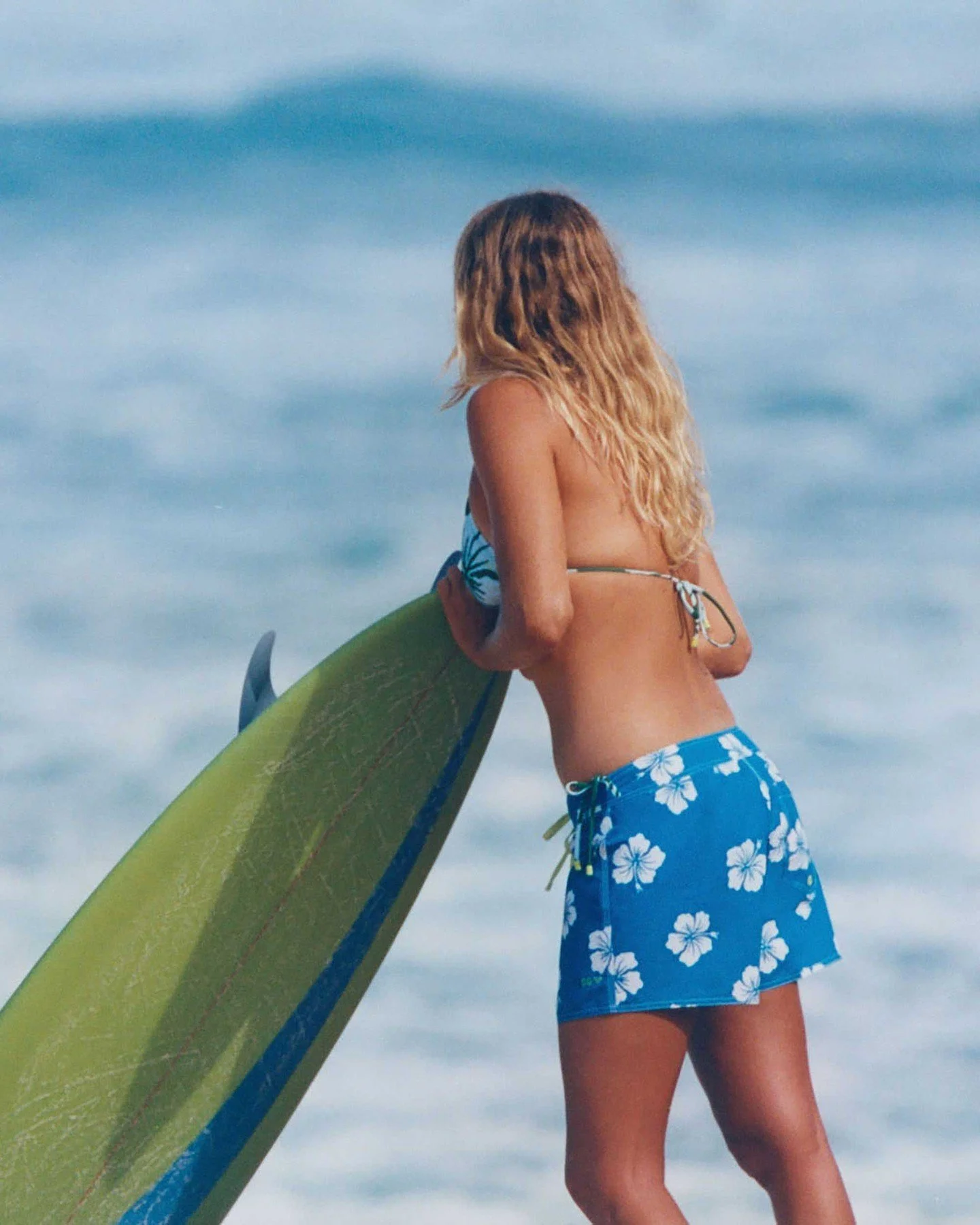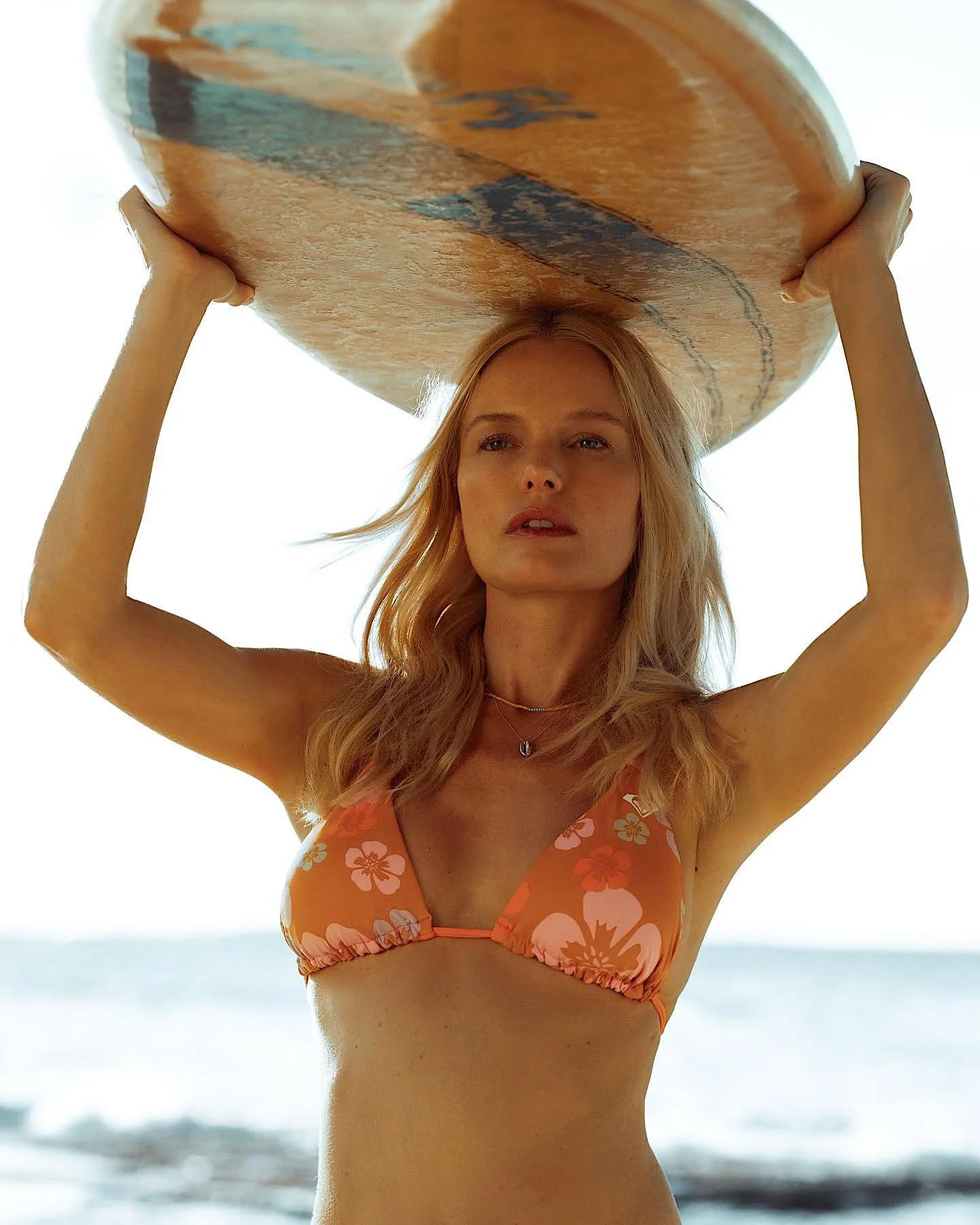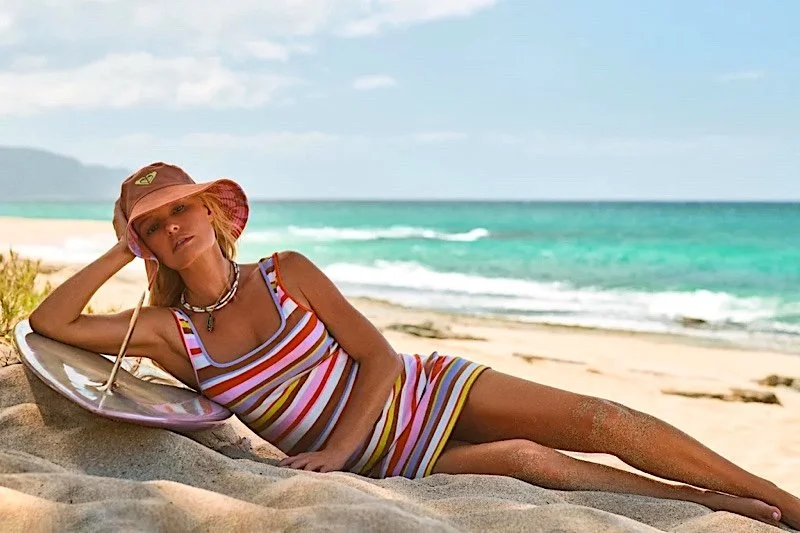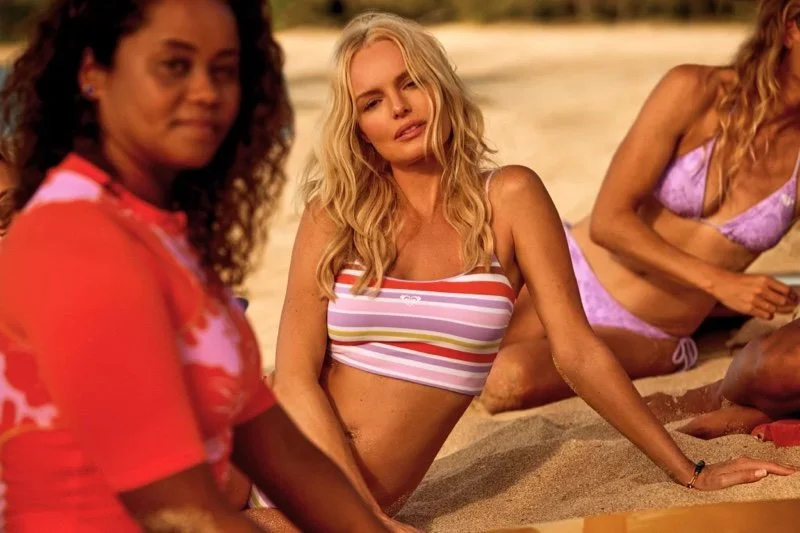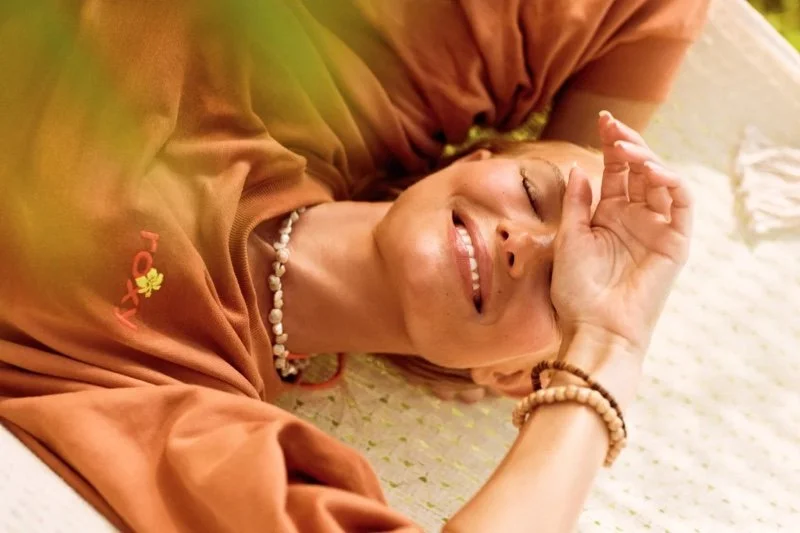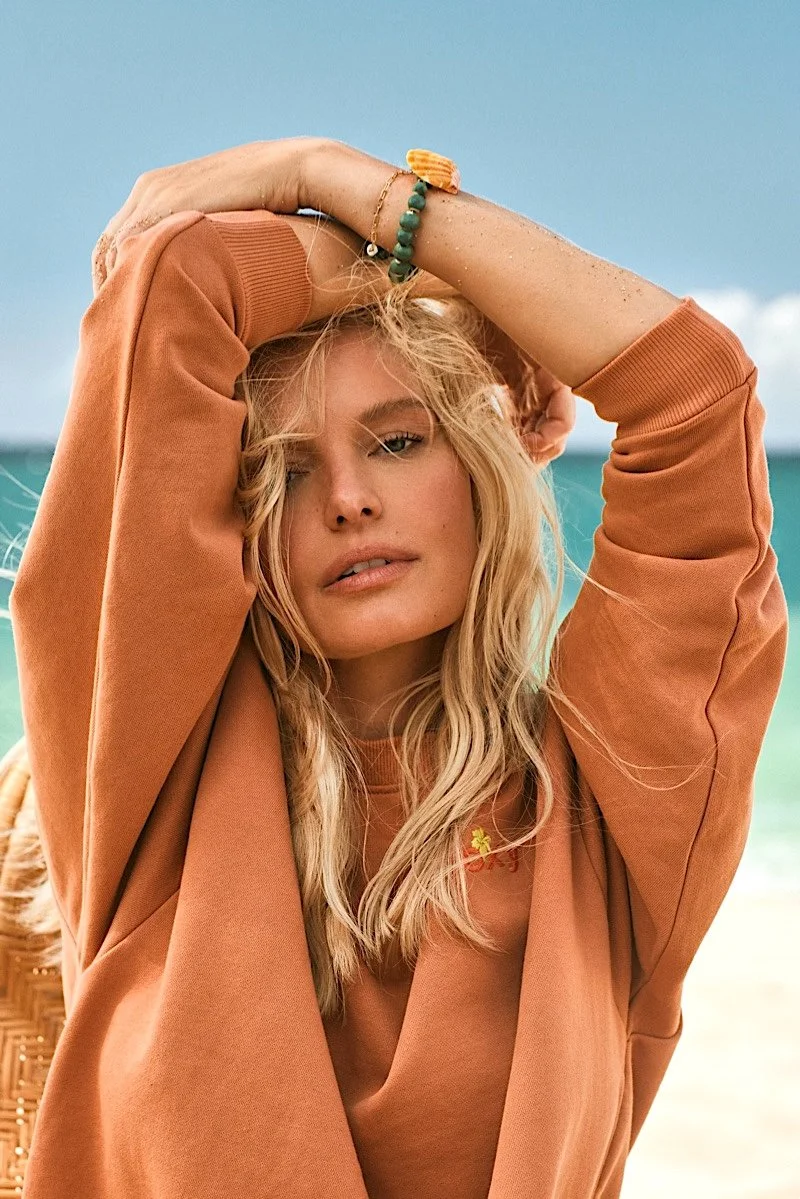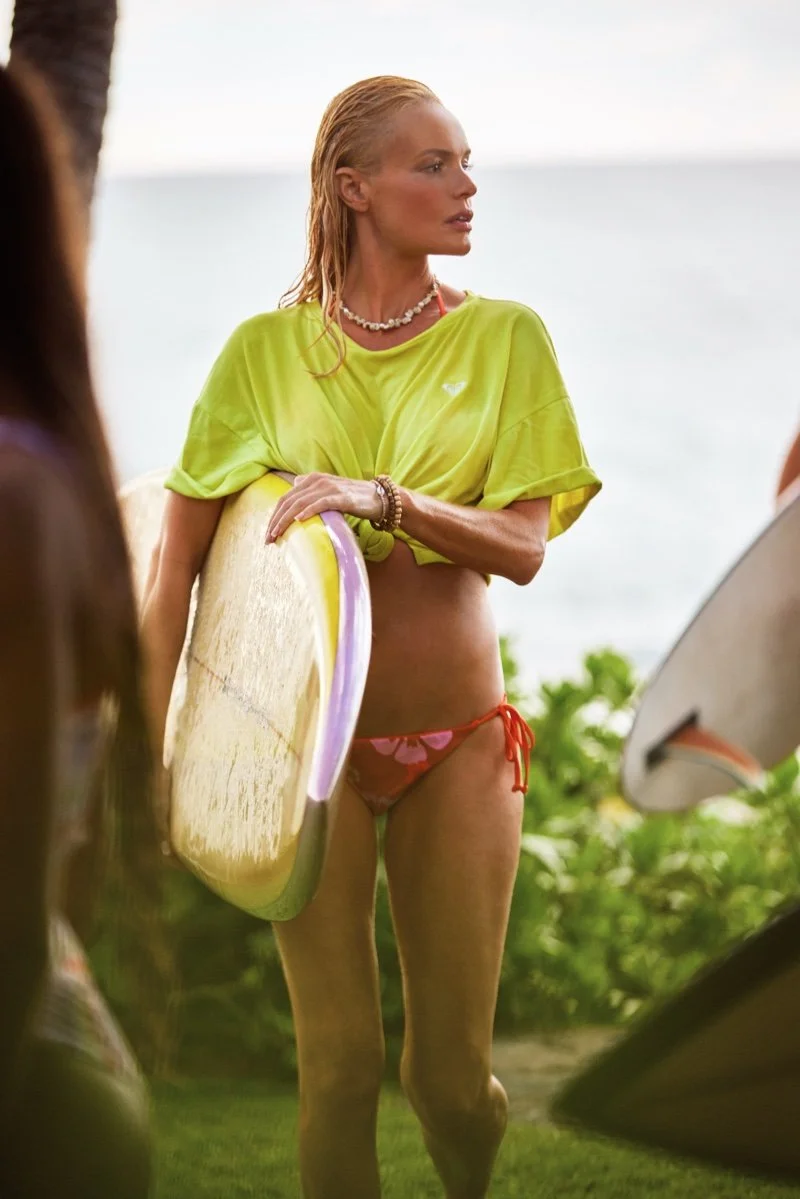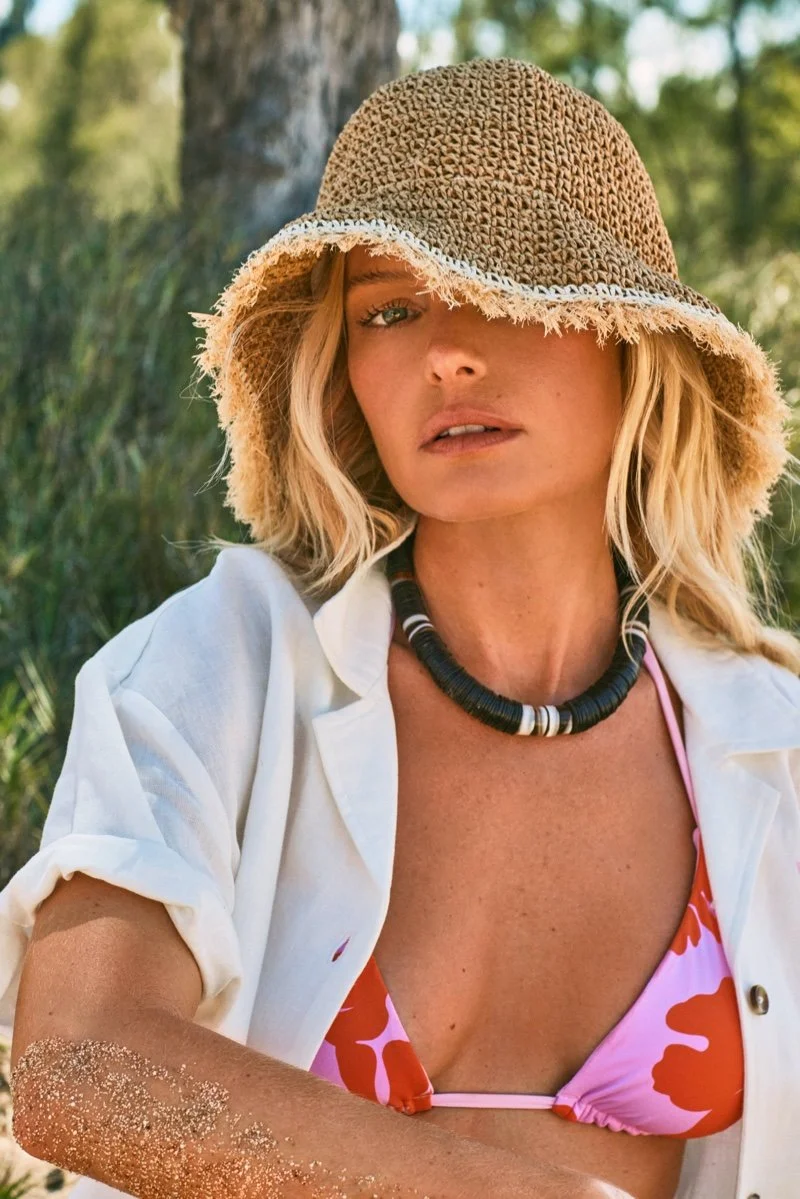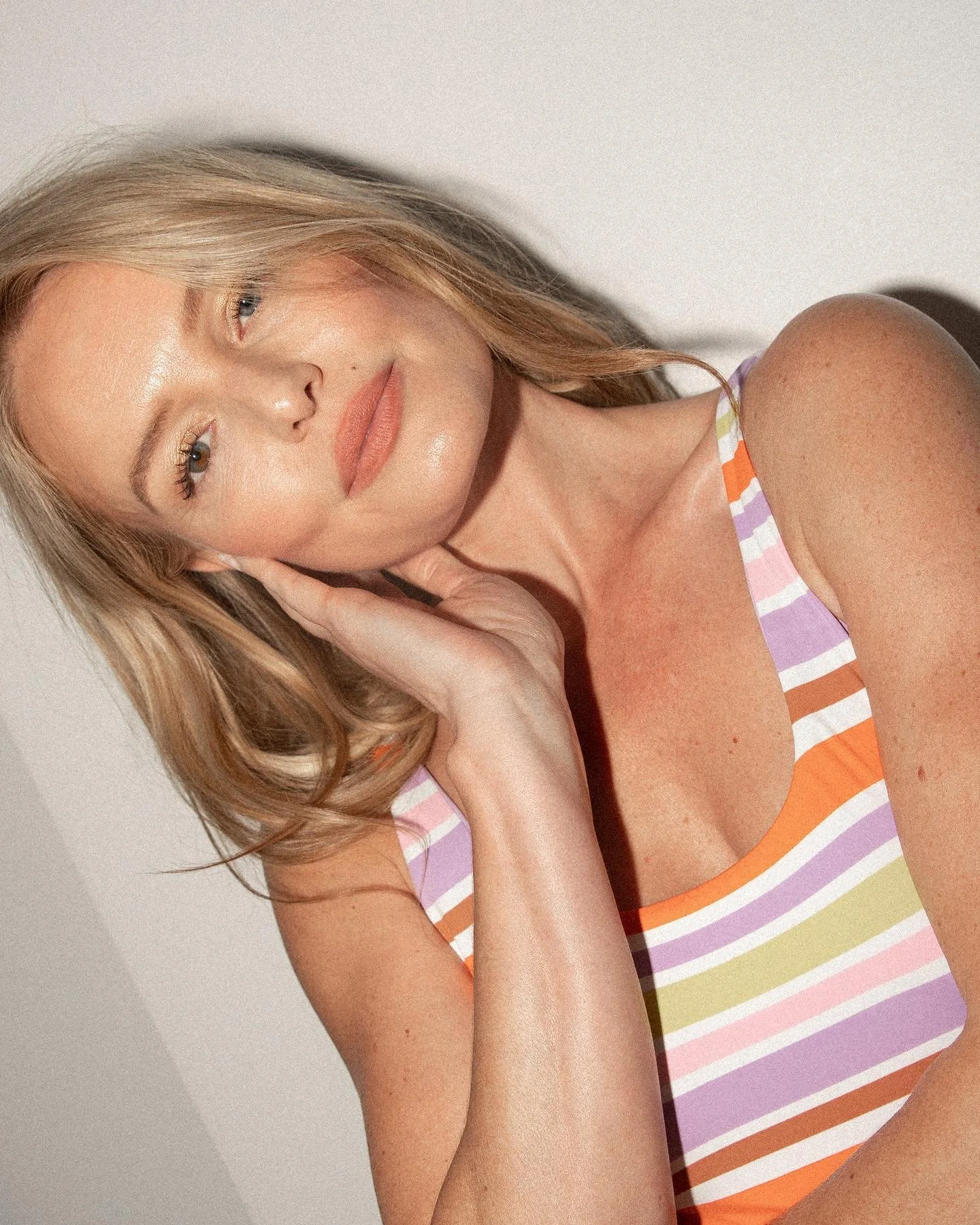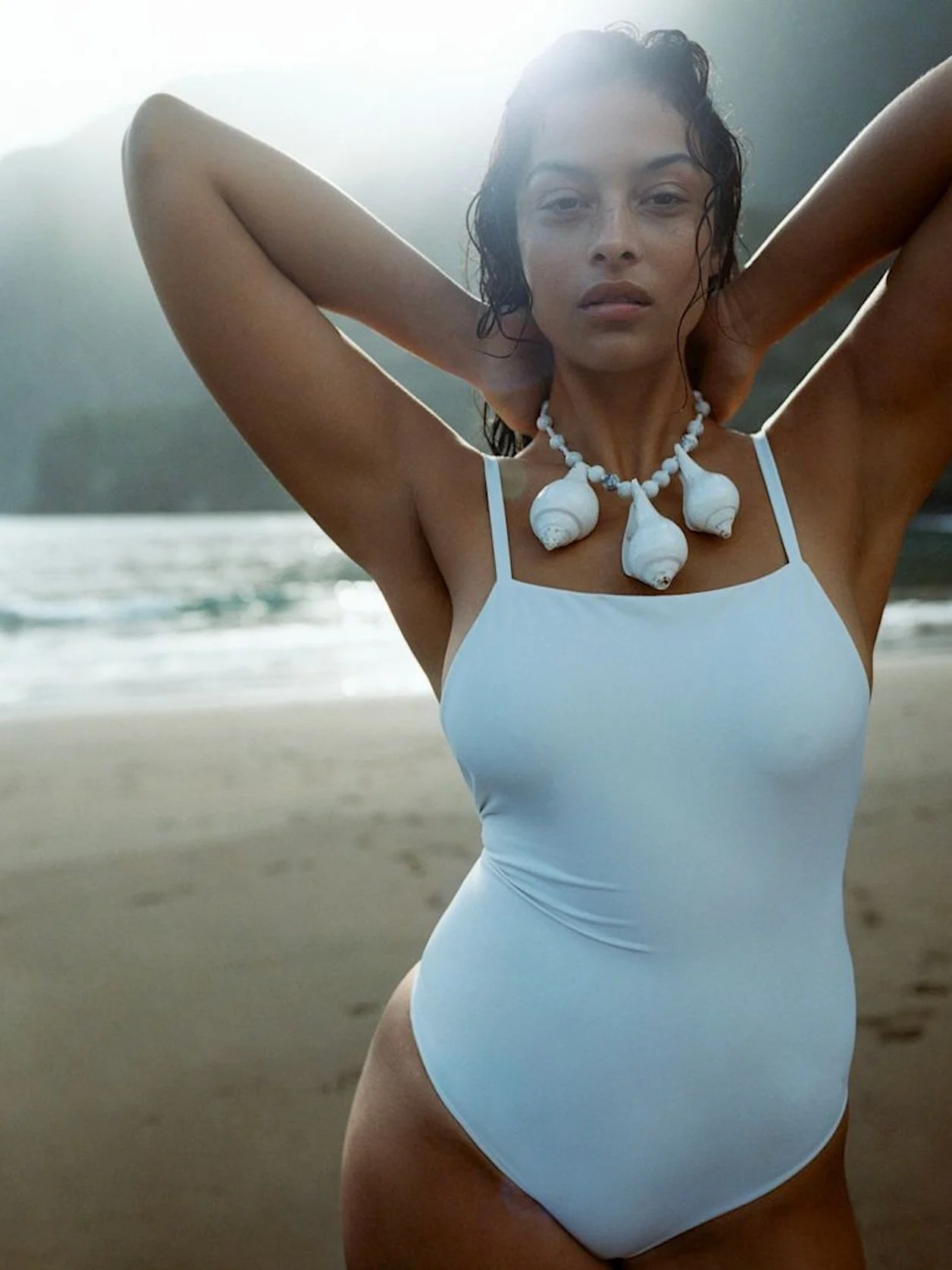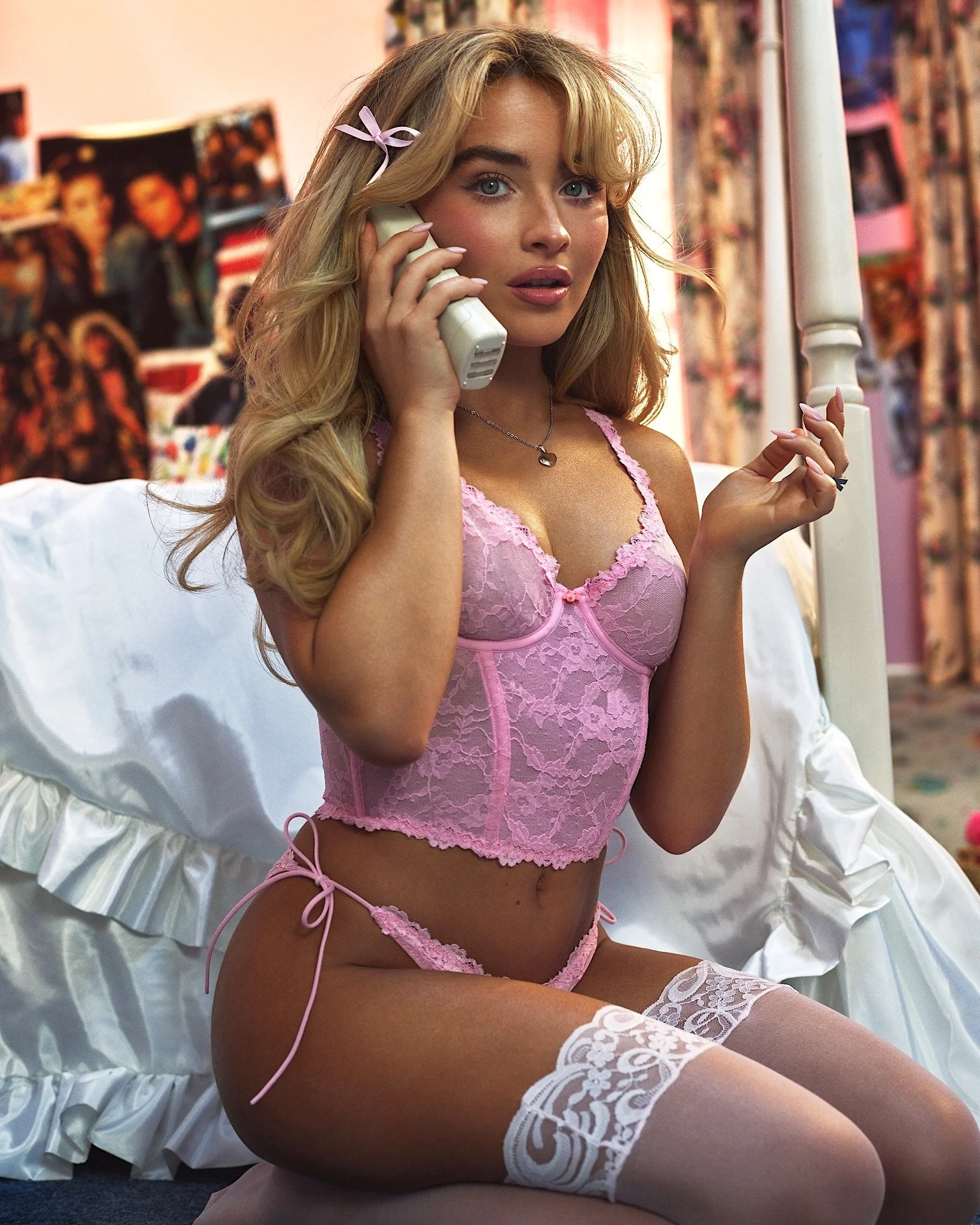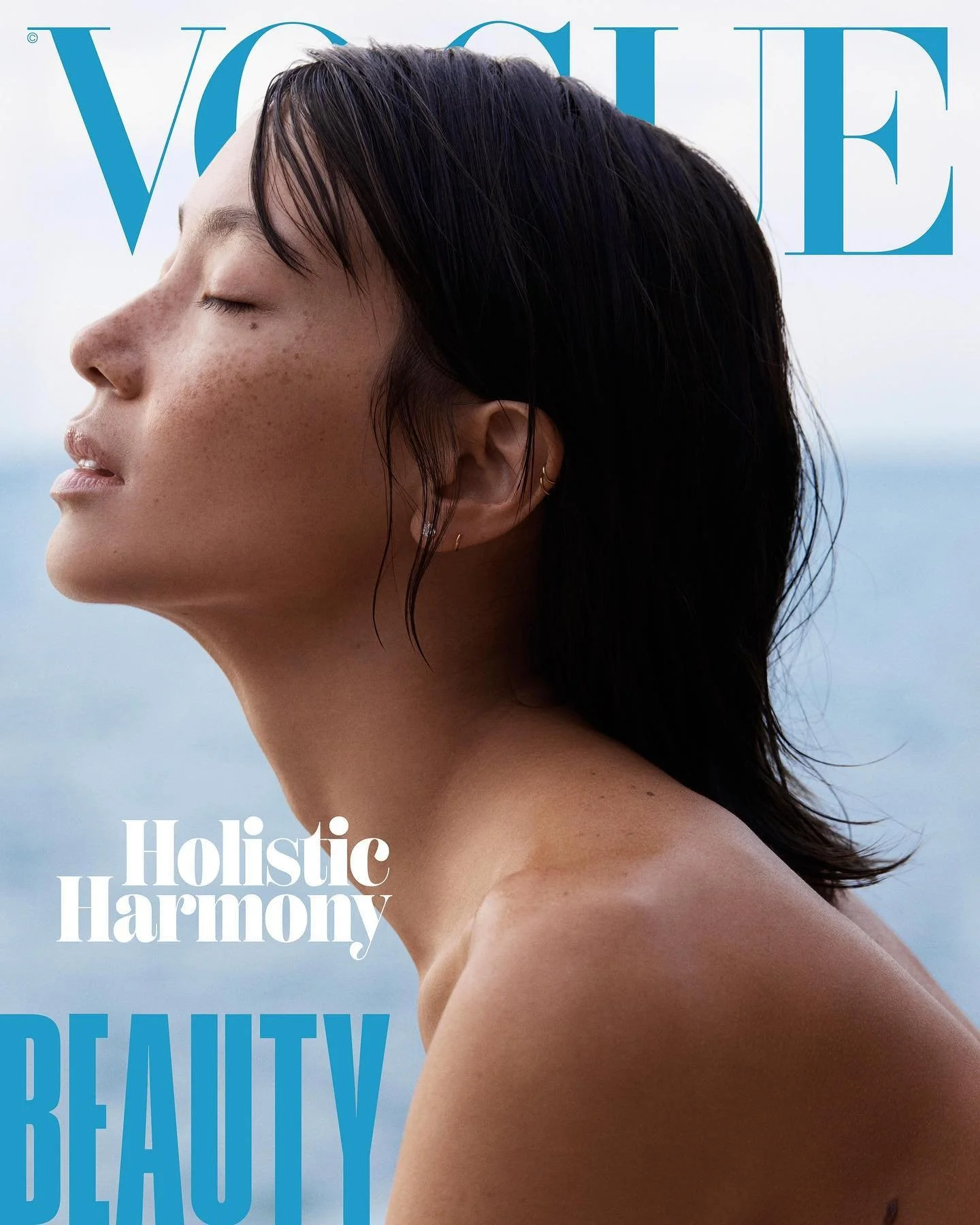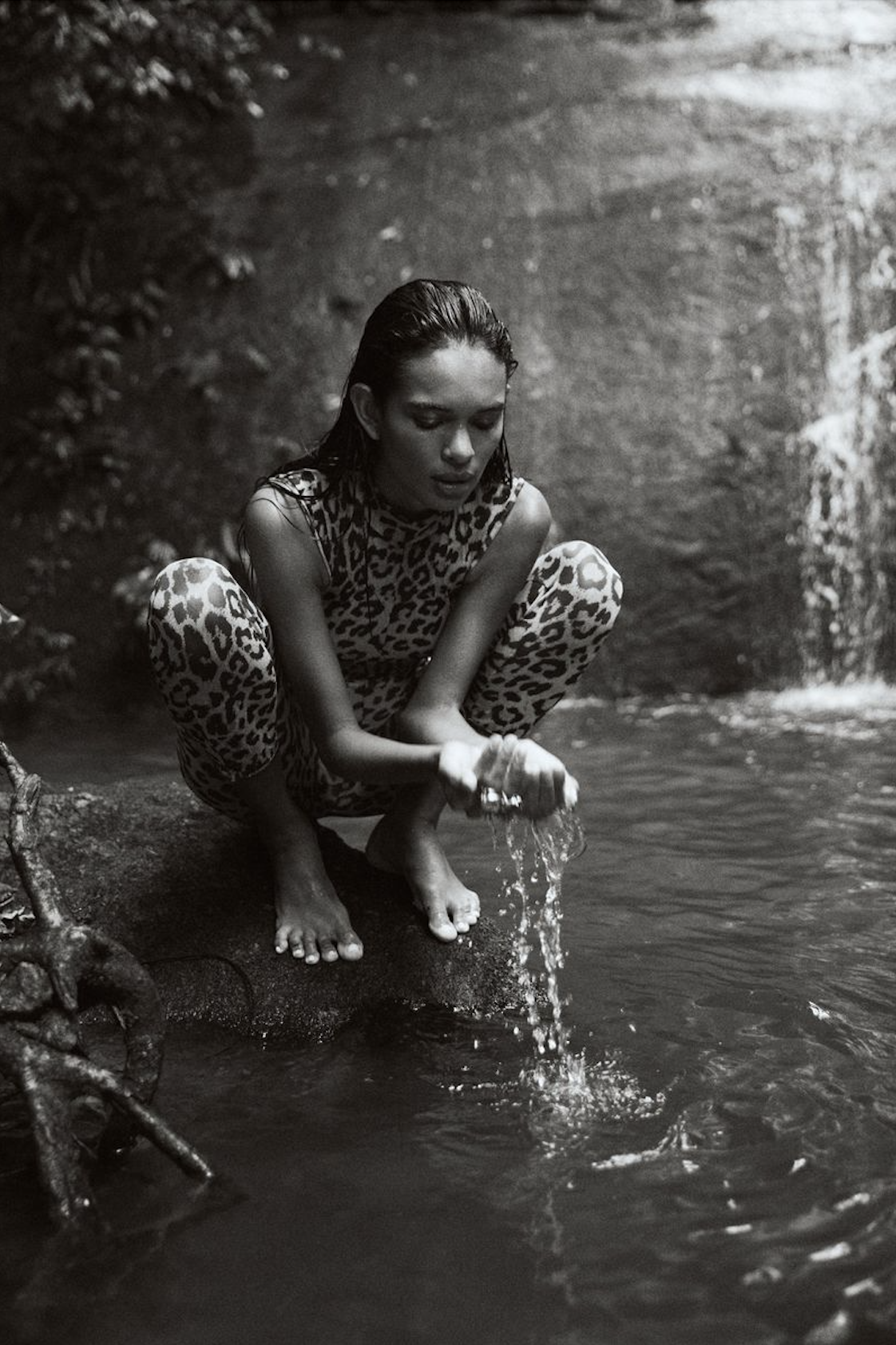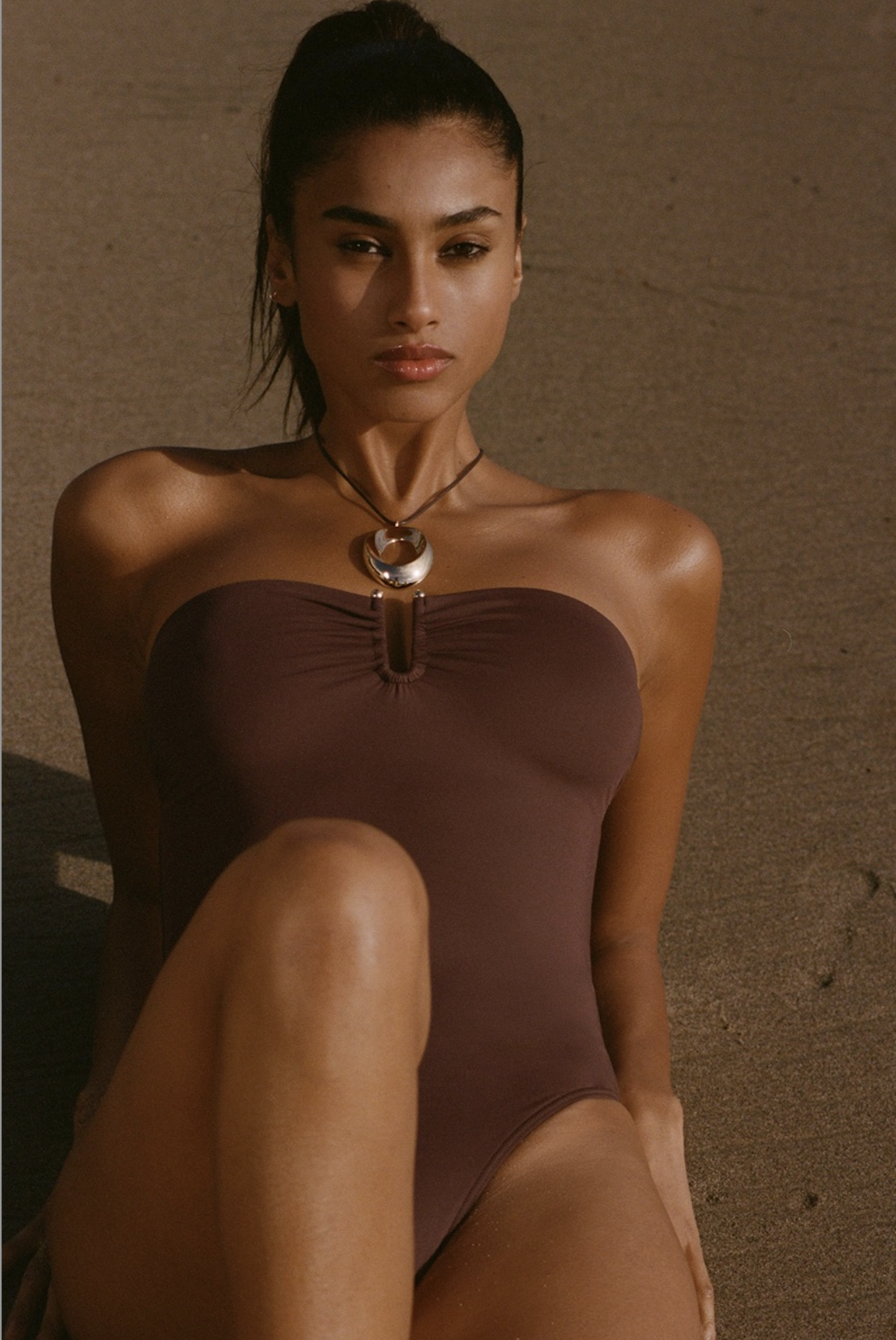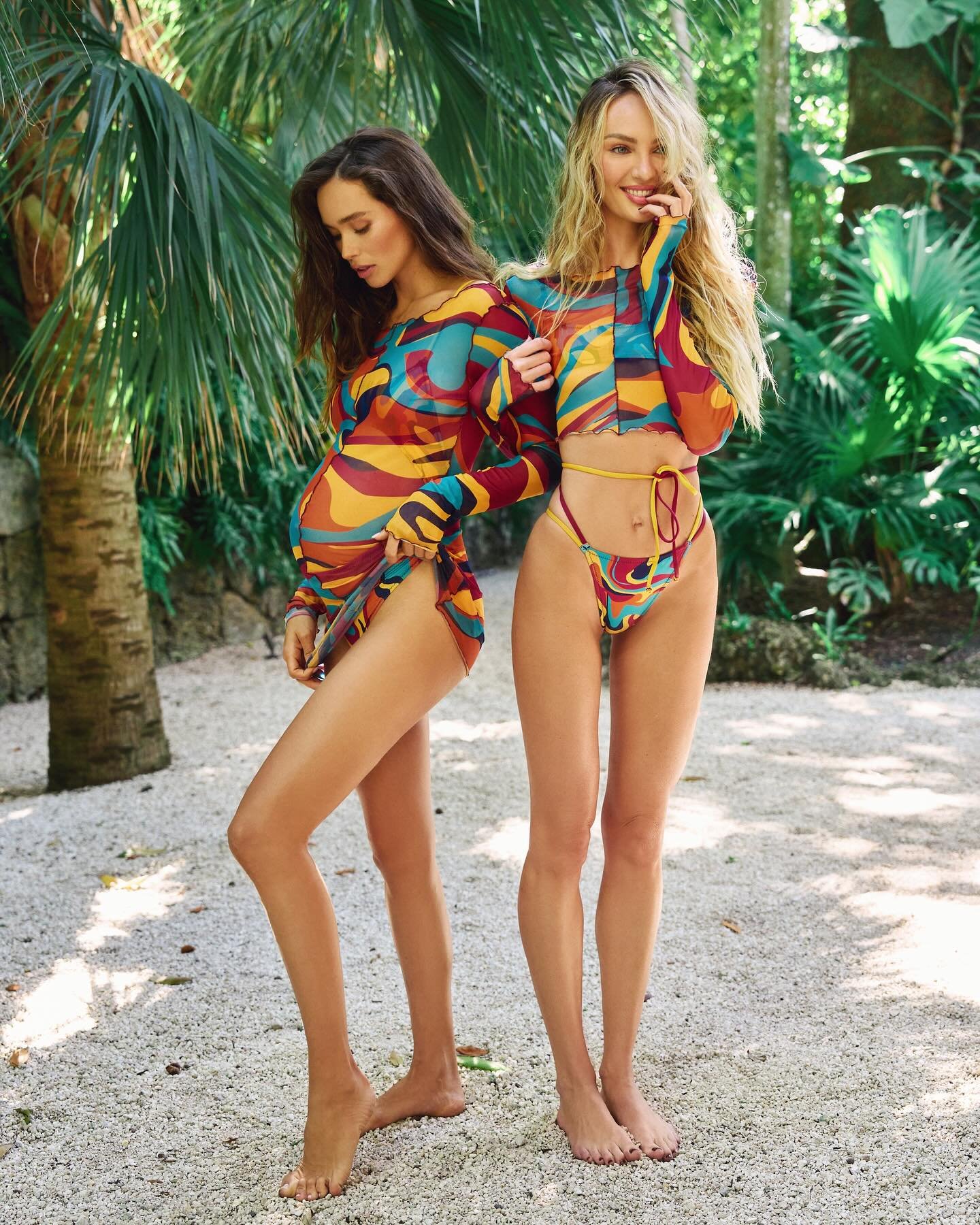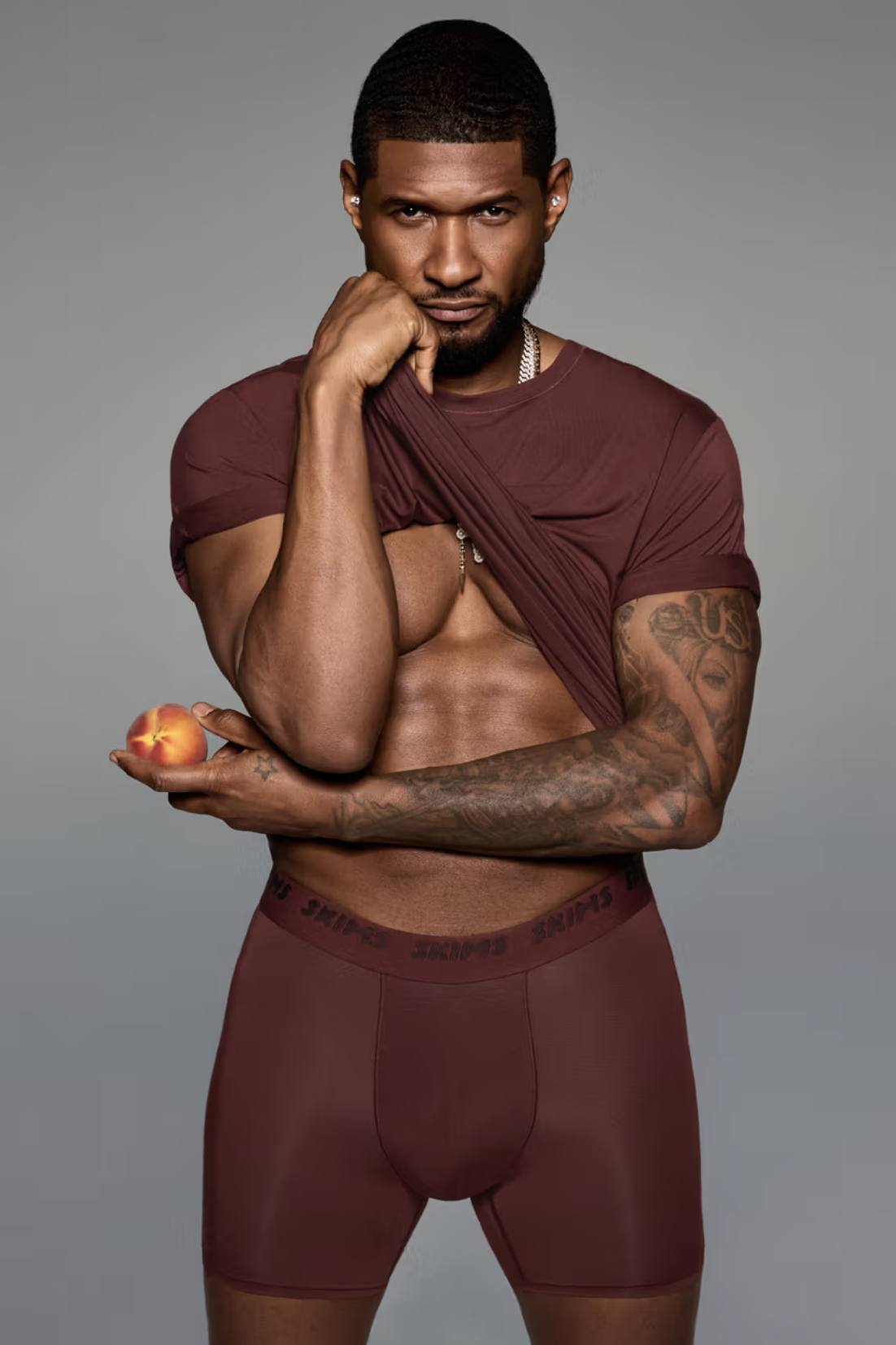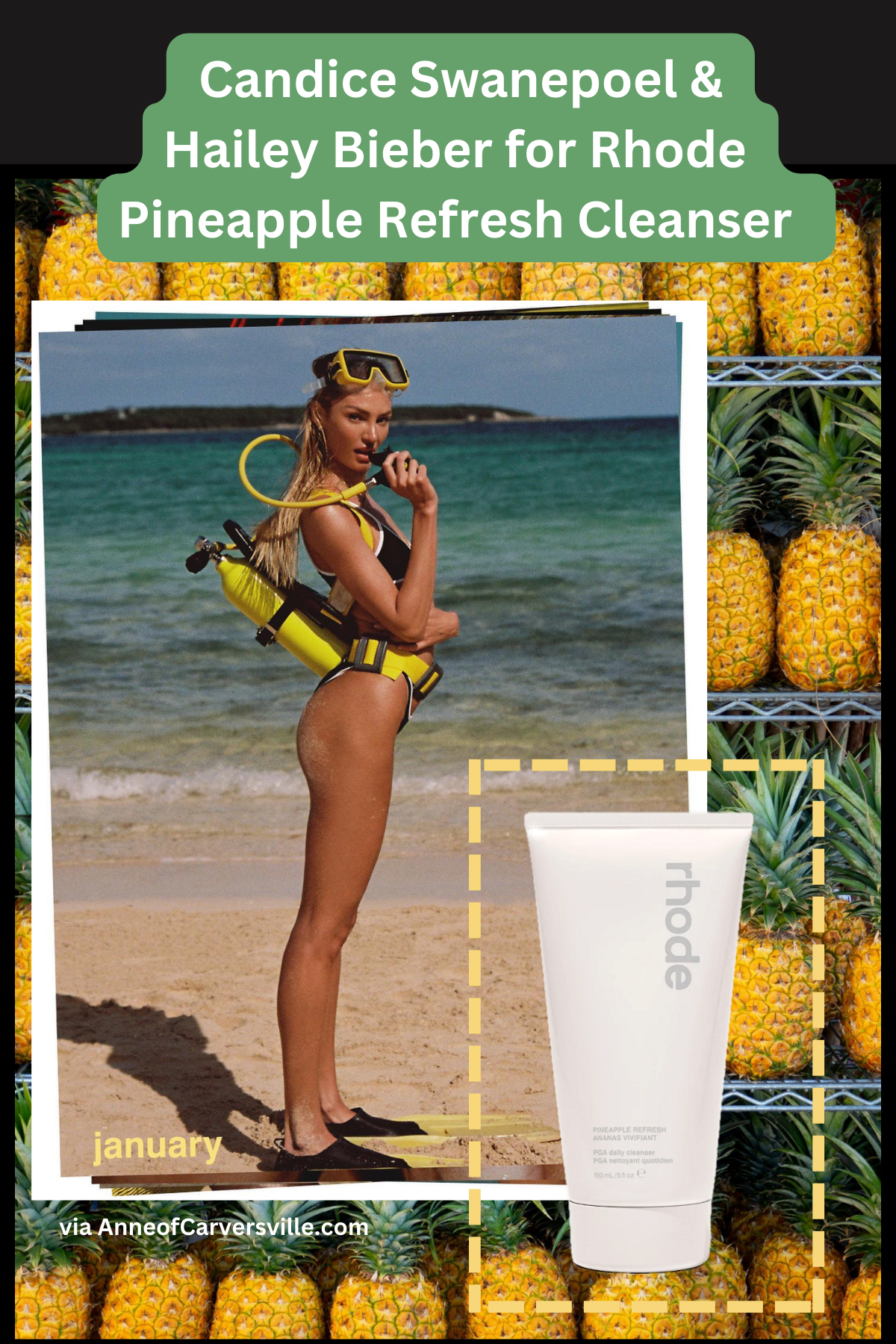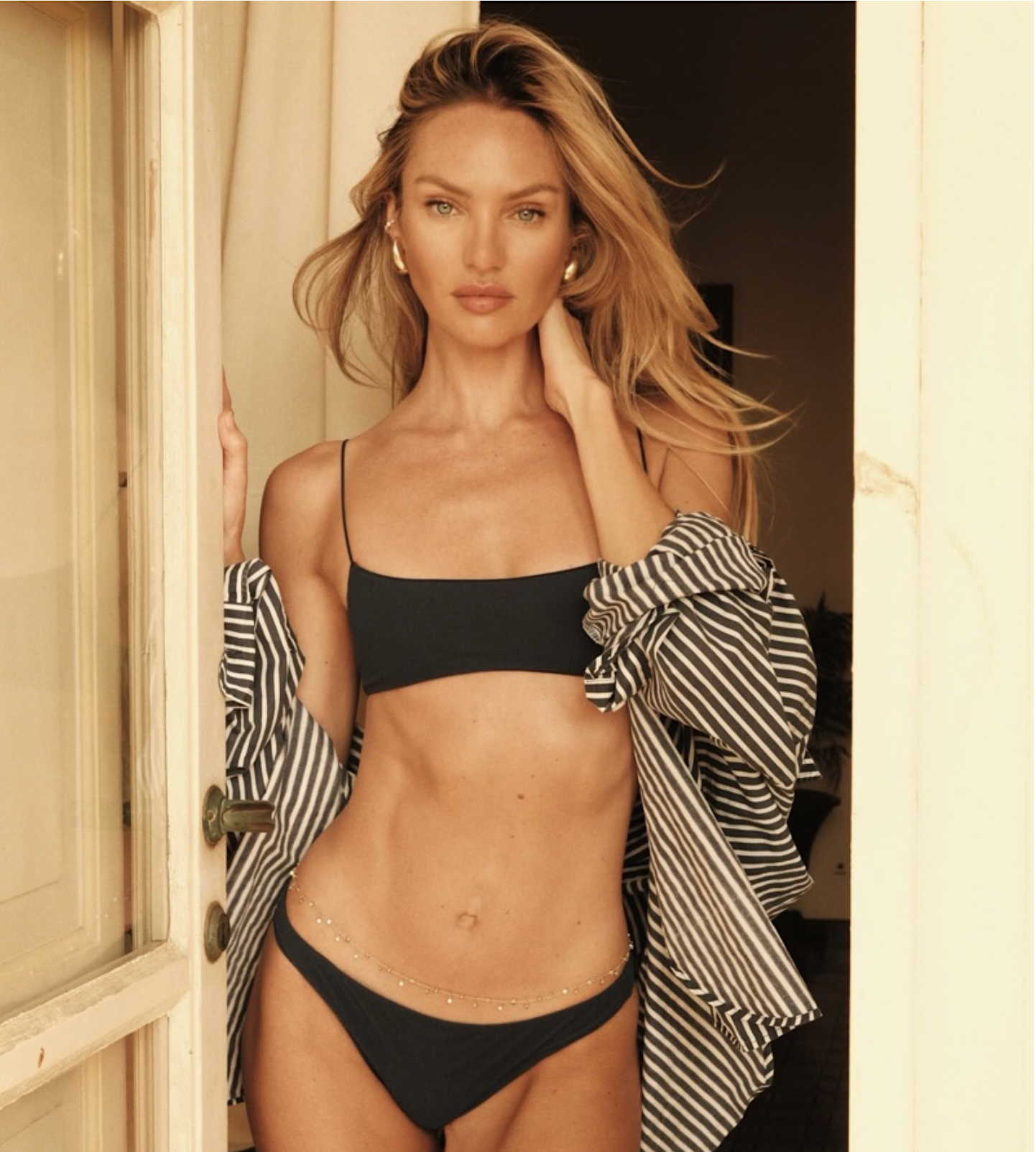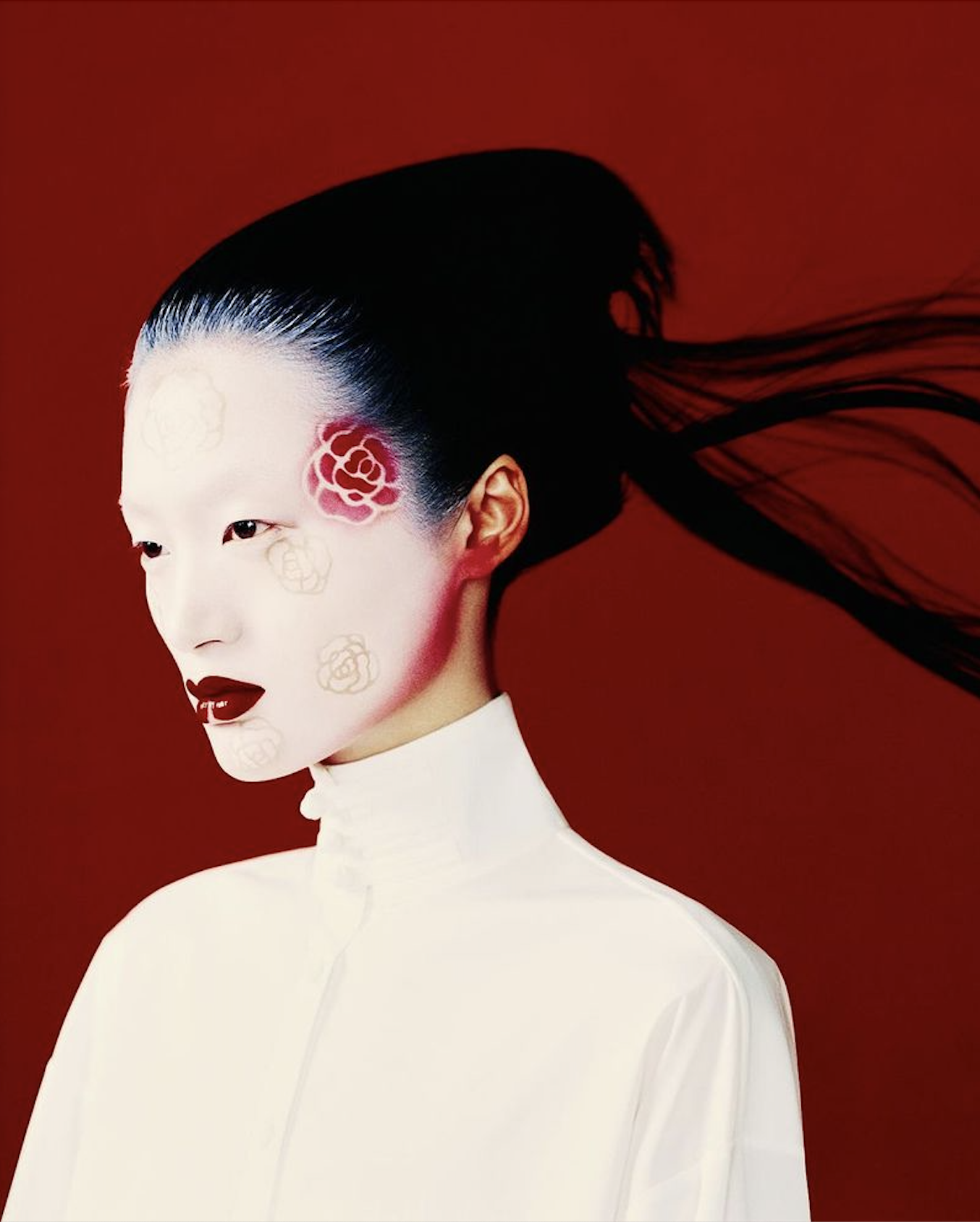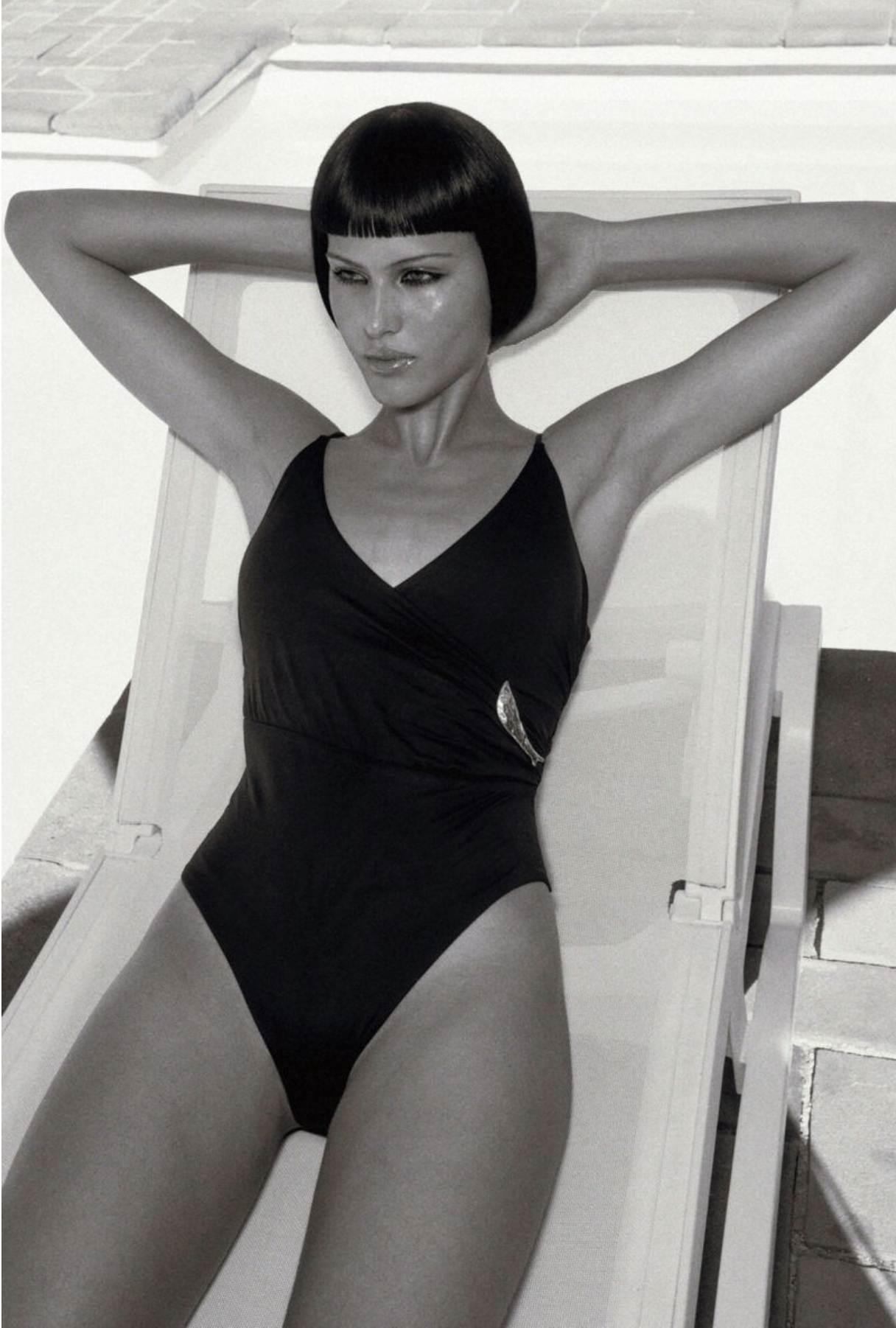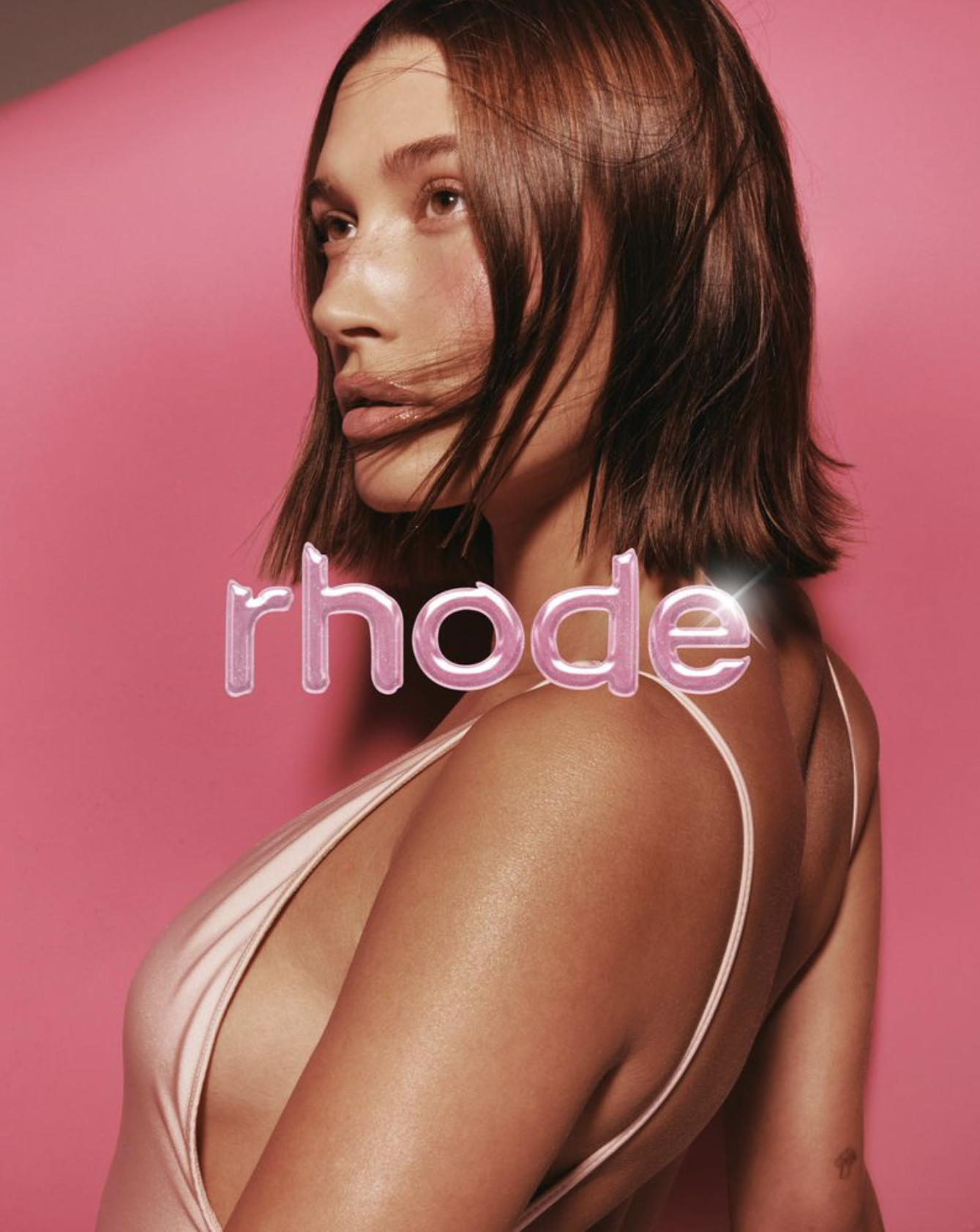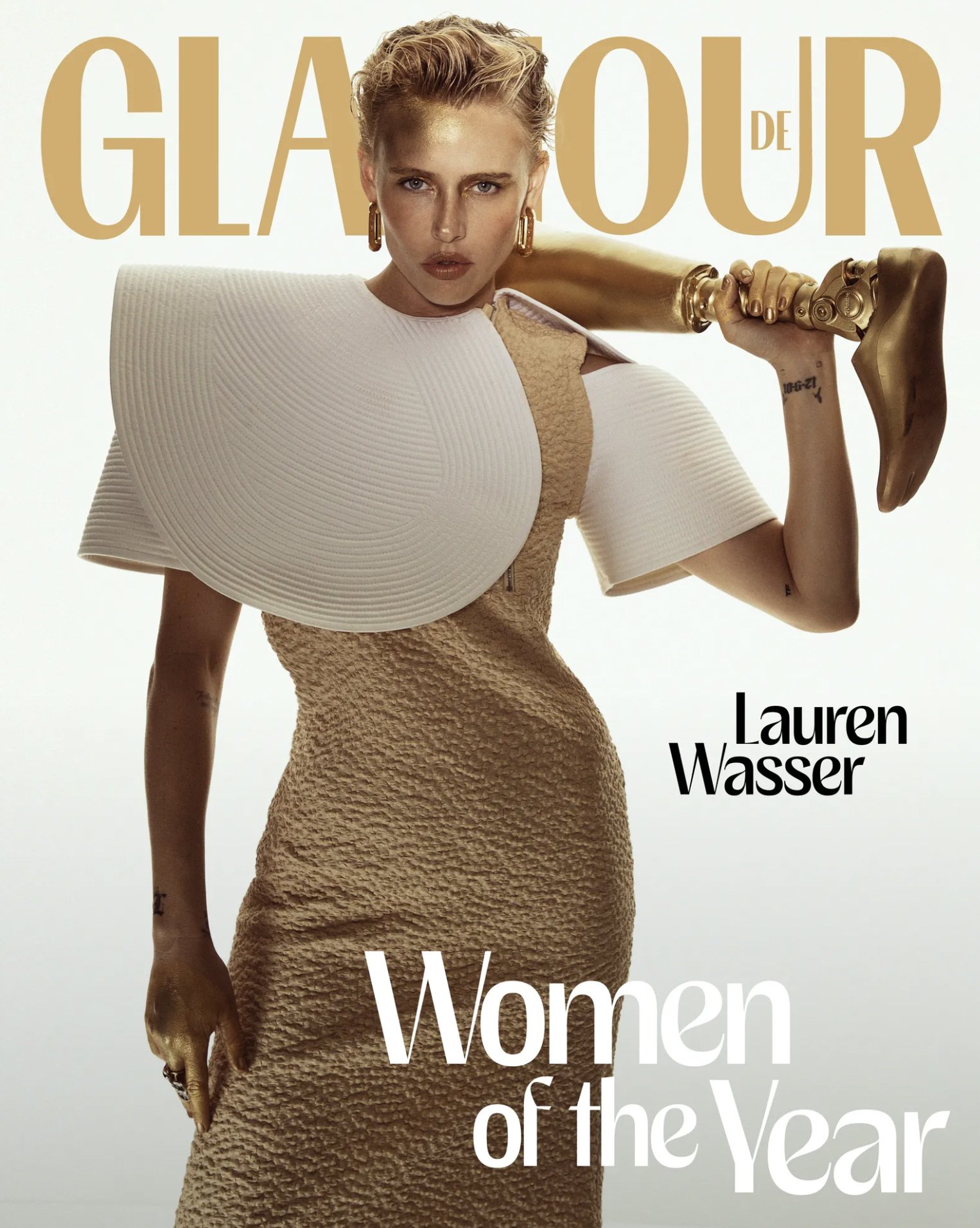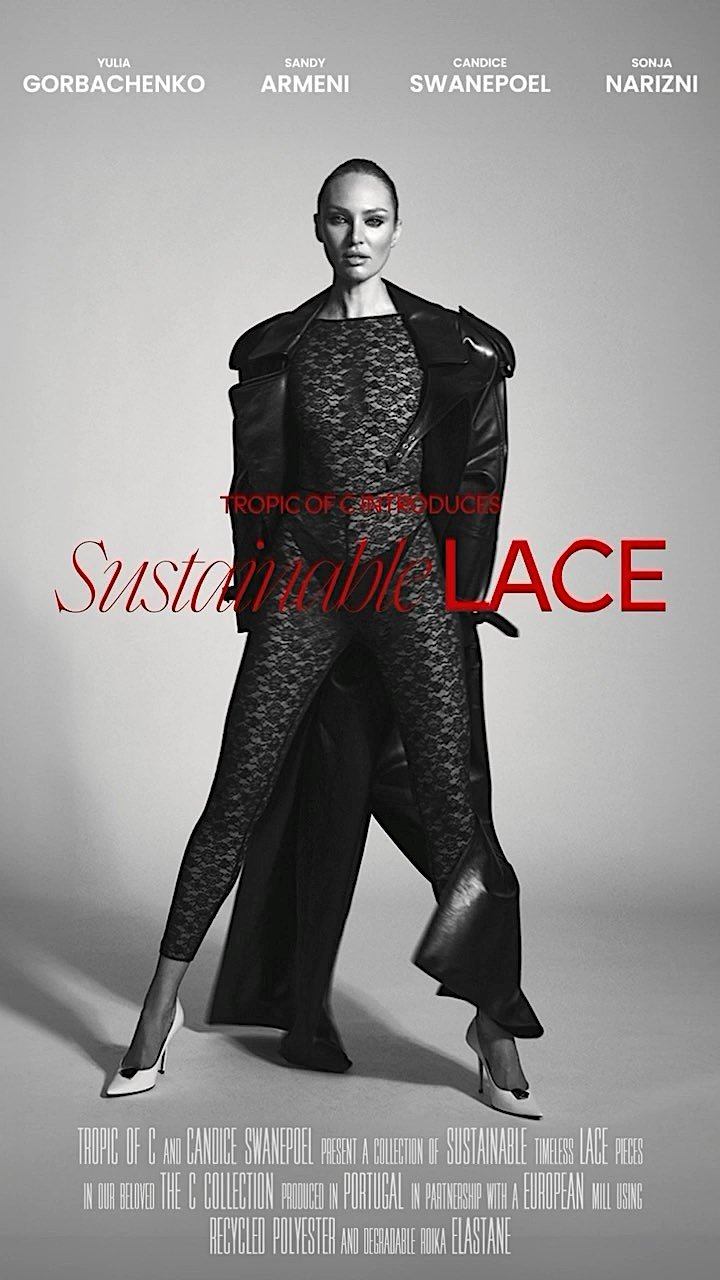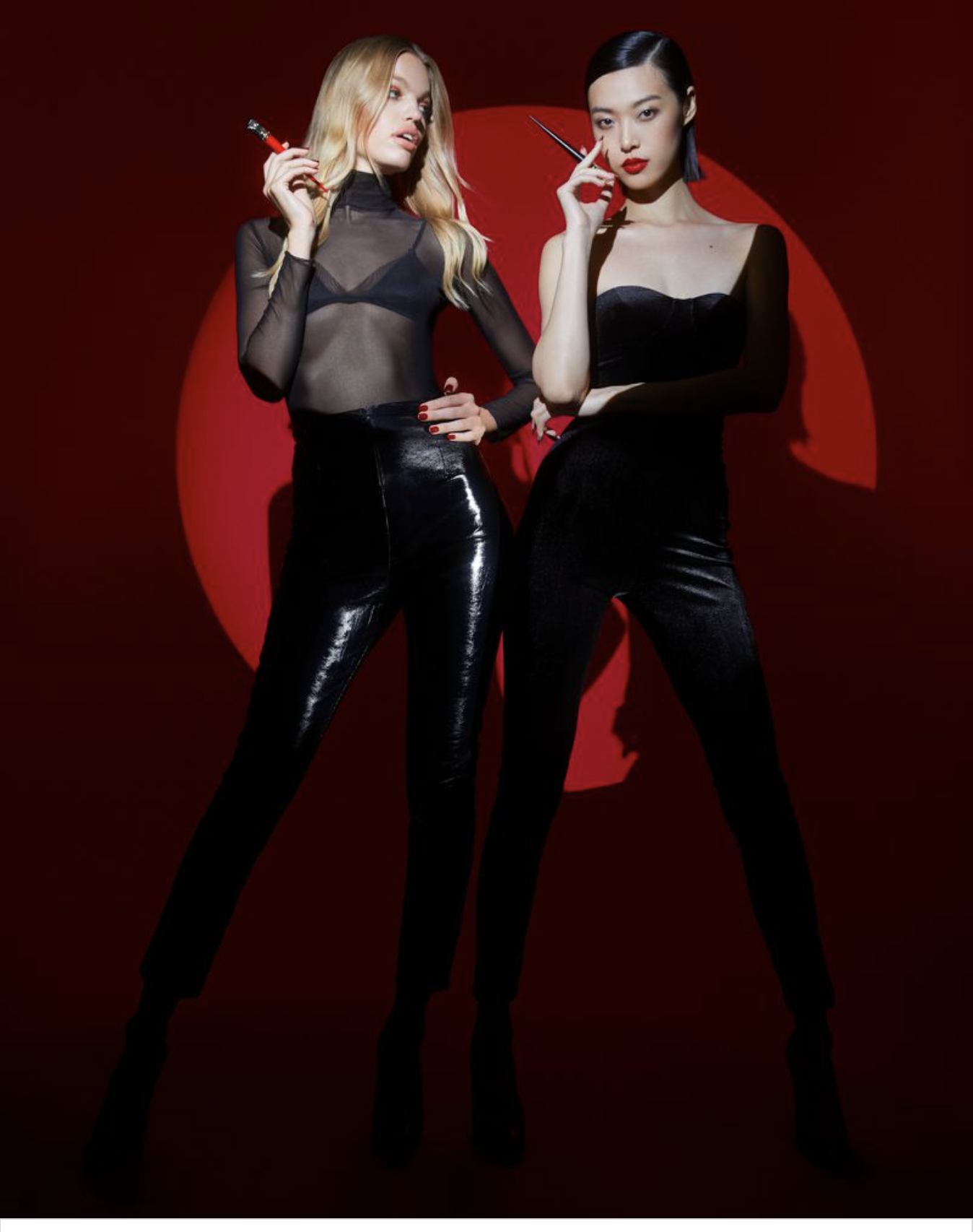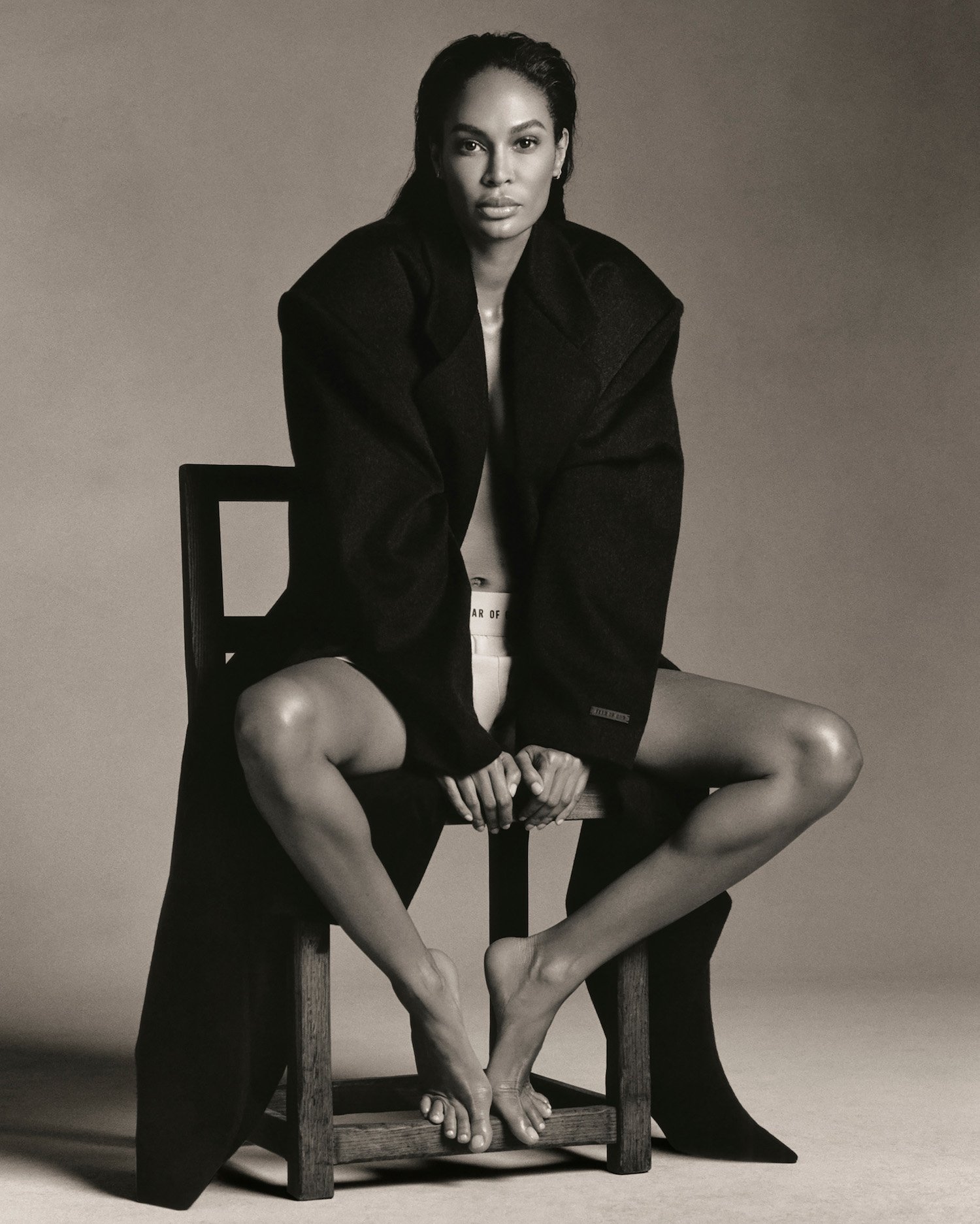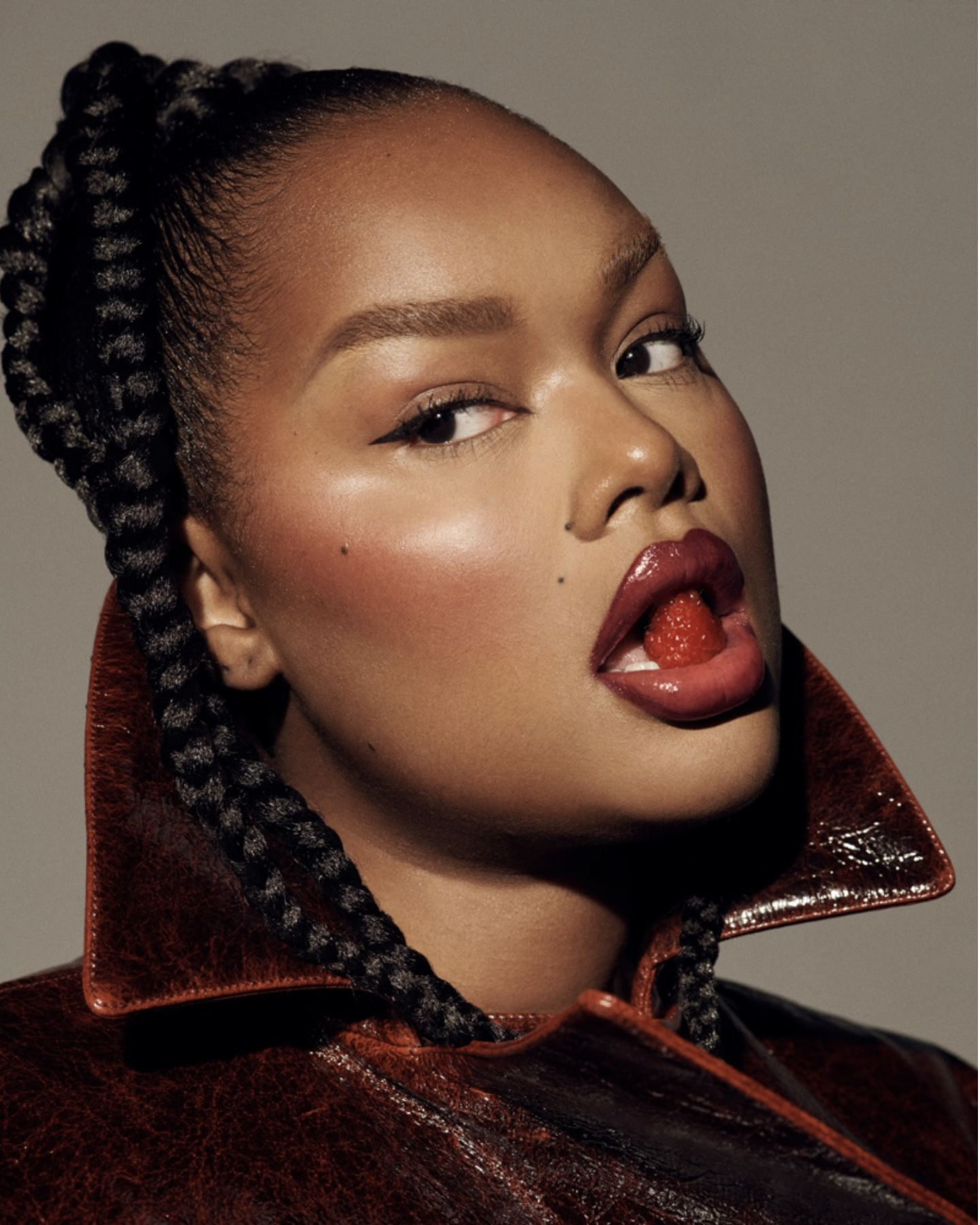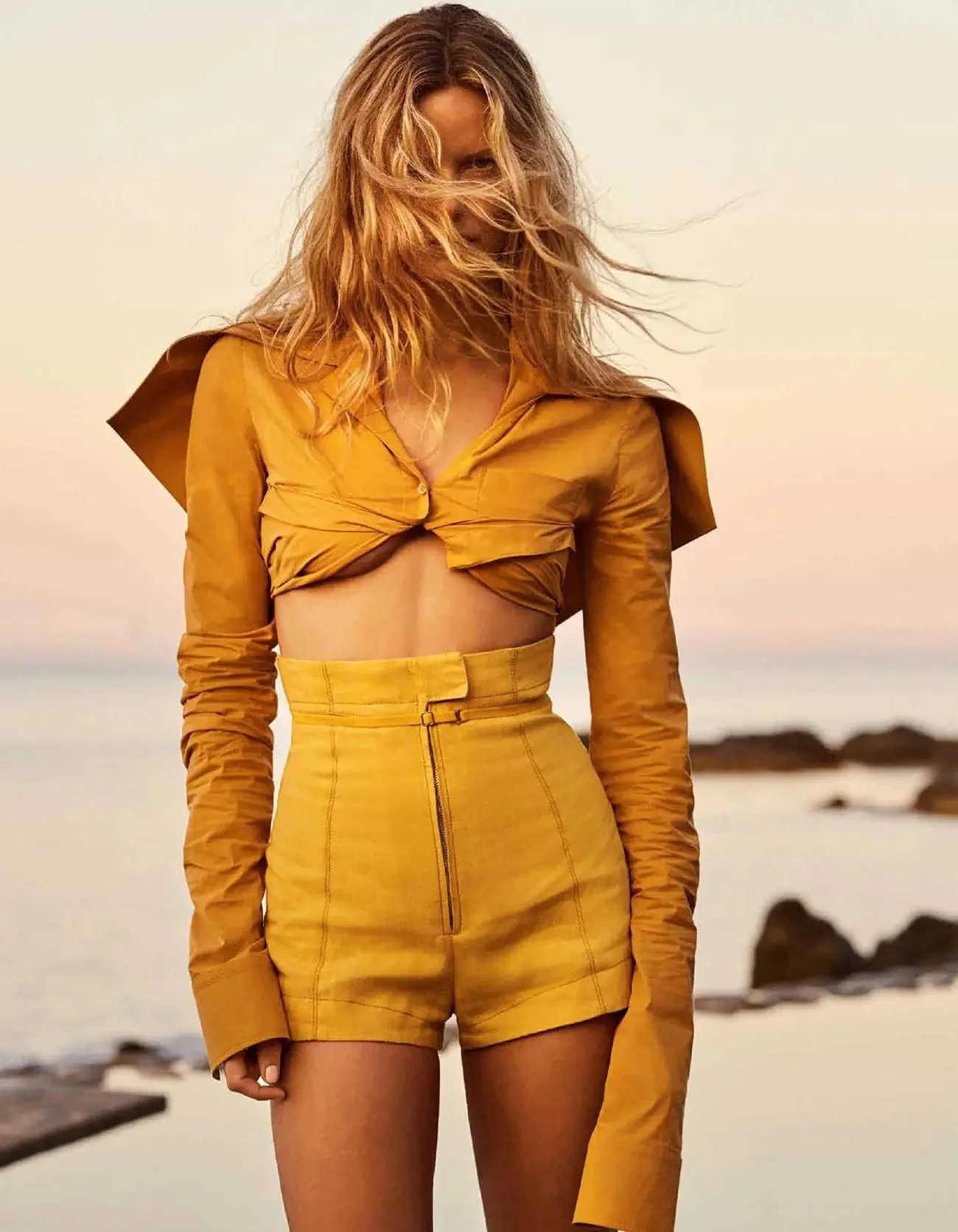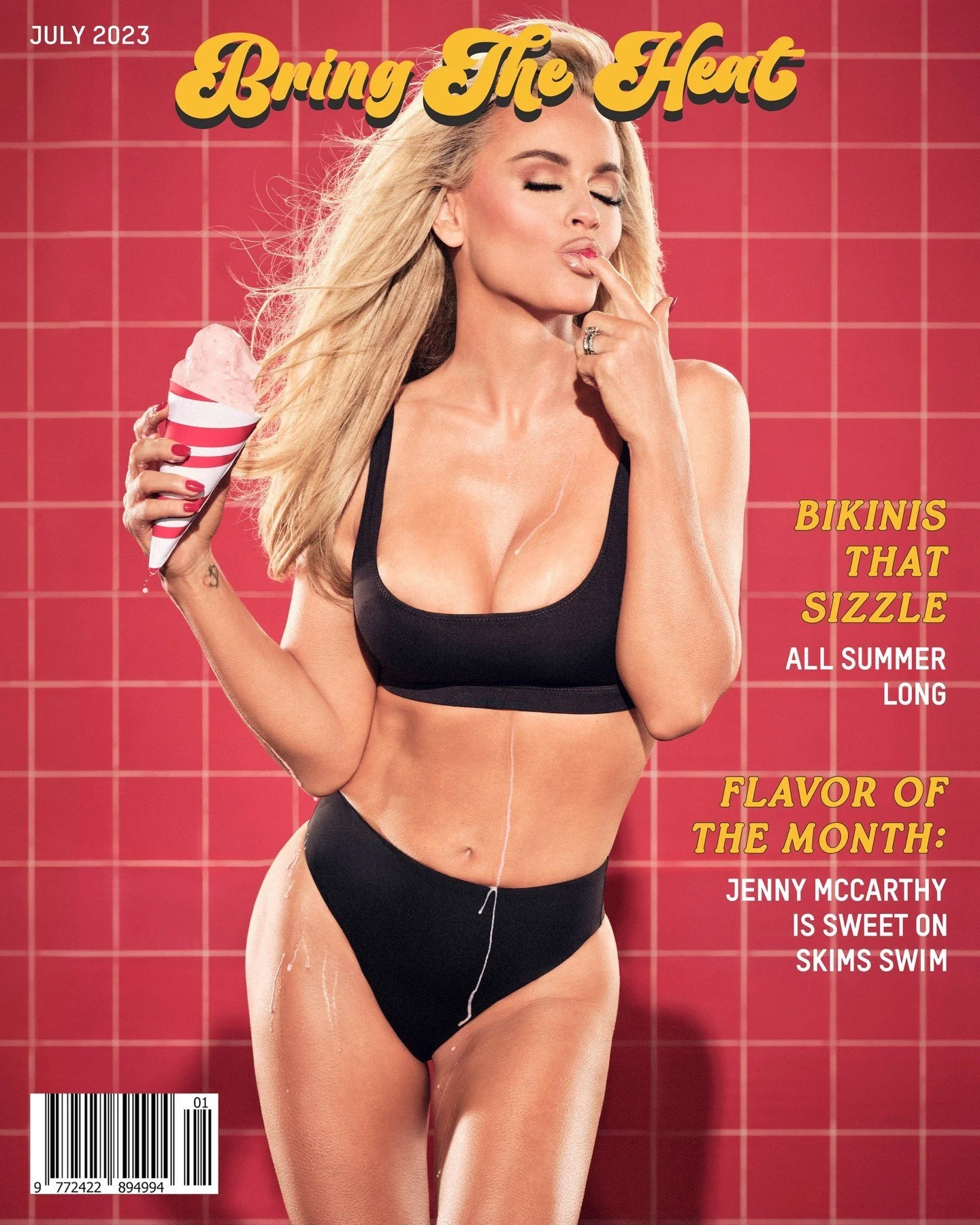ROXY x Kate Bosworth Swim 2023 Collection | "Blue Crush" Is Finally Reality for Women Surfers
/In 2002, the movie “Blue Crush” depicted women competing at Hawaii’s Pipeline on the North Shore of Oahu. In reality, very few women surfed the seven-mile mecca. Surfer Keala Kennelly was one for-real woman surfer, who joined the “Blue Crush” movie with an understanding that if you can’t see it, you can’t be it.
Actor Kate Bosworth was also in “Blue Crush”. She famously dyed her hair sun-bleached blonde as part of her multi-pronged effort to get the part of Annemarie Chadwick, a native of Oahu’s North Shore training to compete in Hawaii’s Pipe Masters, a surfing competition where “you don’t just get worked—you die.”
That descriptor comes from Vogue, who also got clever in writing about Bosworth’s new “Blue Crush” style collab with ROXIE, the women’s surf brand that is credited for designing the first women’s board shorts in 1990.
“I completely became someone else,” Bosworth says of the acting required to convincingly play a surfer who could take on not just the men in the lineup (“Don’t drop in on me again!”) but also best some of the top female athletes competing at the time. Women trailblazers in the surfing like Lisa Andersen—as well as Kate Skarratt and Keala Kennelly, who had cameos in the movie — were her imaginary and real-life mentors.
“Blue Crush” was a movie about the future — 20 years into the future — and that future is now. And while AOC is promoting the Kate Bosworth x Roxy collab, our focus is women surfers. Twice in 2022, female athletes competed at the highest proficiency in Pipeline’s waves.
An Equity Drive for Women Surfers That Took Half a Century
Surfing has long been associated with hyper-masculinity; now changes are finally underway decades later in gender equity policies within its ranks.
“If I had known it would take a half century to get a contest at Pipe or pay parity, I probably would have given up,” said Patti Paniccia, one of the founders of the professional surfing tour in 1976.
The New York Times featured Paniccia, now 70, in a deep dive into women surfers. In those days if surfing competitions involved both genders, the women’s contest would be relegated to what Paniccia called “the slop.”
The efforts to bring equity to women surfing are also spearheaded by powerful, next-generation female surfers like former world champion Layne Beachley, born in 1972. If Paniccia focuses on “the slop” location for women surfers, Beachley speaks about discriminatory practices such as being forced into poor conditions or literally being kicked out of their locations if the surf changed, so male competitors could access “their” better waves.
In July, 2016 Kennelly co-founded the Committee for Equity in Women’s Surfing with other professional big-wave surfers with a focus on how local governments could help the drive for equality among women surfers. They were successful with California state officials agreeing to include a woman’s competition in the big-wave Mavericks surf event.
In December 2020, the World Surf League moved its women’s year-end championship tour event to Pipeline, where it is now anchored in a regular schedule.
Boomer Women Gift Their Equity Drive to Young Women
Competitive women surfers aren’t focused on the fact that the drive for any gender equity took 50 years. “All that matters is the next generation who are 12 and 5 now see themselves in this lineup,” said Tyler Wright, a two-time world champion from Australia, in an interview on the shores of Pipeline.
World Surf League began hosting its 2022 championship tour at the same spots for men and women. The visible presence of young women surfers at Pipeline is already very visible.
Where once it was predominantly male-dominated, now 14.9% of surfers who participate are female. Today’s women are joining the ranks of diehard surfers at rates that outstrip men by 20%. This is fantastic news for both the sport and for female empowerment in our oceans.
Thanks to the efforts of the boomer women surfers and those who came after, a new generation of women surfers are focused on top competitions and big wave events with equal amounts of skill, determination and guts.
The Rise of Female Surfing Communities
We are watching the rise of female surf communities that emphasize cooperation and support rather than competition and objectification. Networks such as Phuket Surfer Girls are providing female surfers of all levels a supportive community environment while helping them hone their skills and develop as competition-ready surfers.
These communities are making waves in global surfing culture by encouraging women to see themselves as surfers. Kinsey Hippolite of Kahuku, Hawaii notes that a recent Instagram survey conducted among college-aged students found that 72 percent considered surfing as being "pretty much a man's sport." But she believes the key to changing that perception lies with women being proud to share their stories and show up as surfers in local communities - sharing their own narratives so others may see that women too can surf!
Women's surfing communities are leading the way when it comes to diversity, inclusivity and ocean conservation in surf travel - spreading their passion across wider communities too. One example is A Liquid Future founded by pro surfer Lizzie Murray that assists remote coastal communities in Indonesia access sustainable tourism opportunities while offering accessible education in English, creative media production, water sports and ocean conservation. Meanwhile Beyond the Surface International works with marginalized fishing communities to keep our oceans clean for everyone, not just surfers.
Leaving Gidget Behind
Though female surfers are on the rise, the Gidget image still persists within the surf industry. This image is narrowly defined and constricting, leading to sexualisation of girls and young women that can have serious repercussions for their emotional, social and psychological landscapes.
Surf brands must promote women surfers of all ages and abilities as models for all audiences, while emphasizing its many positive attributes, including its capacity for building mental strength and confidence. By sharing positive messages about surfing that promote its benefits, surf brands will help dispell its Gidget image while encouraging more men and women alike to join her out there and hit the waves.
New Travel Trends Combine Surfing and Wellness
Surfing has also inspired new travel experiences that combine surf with wellness. For example, surf camps now provide yoga classes as part of their instruction while former surf spots now also feature spa and wellness services - making female surf travel increasingly attractive.
This trend looks set to continue, and we will do our next article on women riding on the waves with a focus on this new wellness meets surfing experience. ~ Anne


